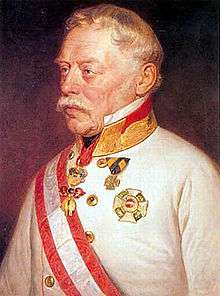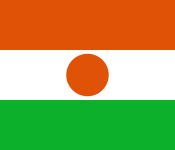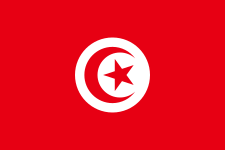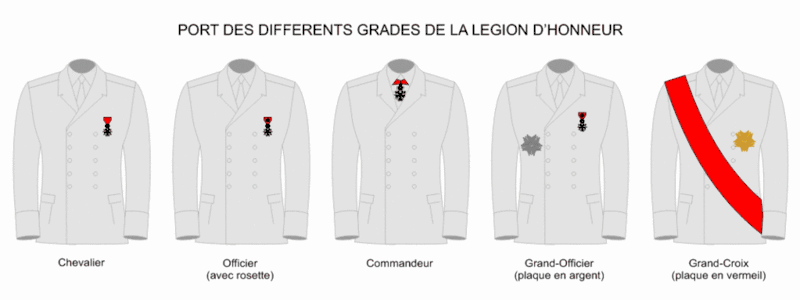Grand Cross
Grand Cross is the highest class in many orders, and manifested in its insignia. Exceptionally, the highest class may be referred to as Grand Cordon or equivalent. In other cases, the rank of Grand Cross may come after another even higher rank, e.g. Grand Collar. In rare cases, solely the actual insignia is referred to as the "grand cross".

In international relations, in many times the class of Grand Cross is typically reserved for royalty, heads of state and equivalent. Sometimes a holder of the highest class or grade are referred to as "Commander Grand Cross",[A 1] "Knight Grand Cross", or just "Grand Cross".
In the United Kingdom, the rank entails admission to knighthood, allowing the recipient to use the honorific "Sir" (male) or "Dame" (female) as a style before his or her name, while entitled "Knight Grand Cross" or "Dame Grand Cross". This stands in contrast to the typical practice in other countries where knighthood is conferred at the initial, lowest rank of the order, typically "Knight".
In Bavaria, the royal military order established by Maximilian Joseph consisted of three classes with the Grand Crosses ranking above the Commanders and Knights.[2] The Grand Cross title has also been used to confer military merit. For instance, the Grand Duchy of Baden awarded Prince Rupprecht a Grand Cross after World War I.[3]
From 1870 to 1918, the German Empire also set the Grand Cross as the highest rank of the Order of the Iron Cross, followed by the first and second classes.
Denomination "Grand Cordons"
The orders in which the highest rank (or second after "Collar") is named "Grand Cordons" include the following orders:
.svg.png)





















.svg.png)










See also
- Order of chivalry
- Order (distinction)
- Phaleristics
Explanatory notes
References
Footnotes
- "Archived copy" (PDF). Archived from the original (PDF) on 3 March 2014. Retrieved 28 February 2014.CS1 maint: archived copy as title (link)
- Carlisle, Nicholas (2012). A Concise Account of the Several Foreign Orders of Knighthood: and Other Marks of Honourable Distinction. Dallington, East Sussex: The Naval and Military Press. p. 67. ISBN 9781781514290.
- Zabecki, David (2014). Germany at War: 400 Years of Military History [4 volumes]: 400 Years of Military History. Santa Barbara, CA: ABC-CLIO. p. 1629. ISBN 9781598849806.
External links
| Wikimedia Commons has media related to Category:Stars of orders. |
